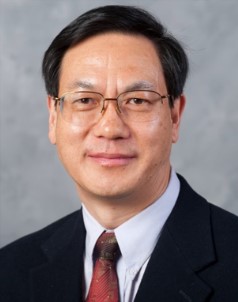The science of contact-electrification and the technology of triboelectric nanogenerators

报告人:Zhong Lin Wang
时间:7:30 PM, November 14, 2020
地点:Teams
Link:https://teams.microsoft.com/l/meetup-join/19:meeting_YTdiNTlmYTYtNjhlMS00OTcwLTk1YzUtYTgwOGJjMGZkMjRl@thread.v2/0?context=%7B%22Tid%22:%22898a8a19-dc61-4ca6-9bb3-5c98e3a617f8%22,%22Oid%22:%22f6ed8edb-5540-4e6f-a5e9-053b7ed5ea54%22%7D
邀请人:Omid Mahian
摘要:
Contact electrification (CE) (or usually called “triboelectrification”) effect, the most fundamental effect for electricity, has been known for over 2600 years since ancient Greek time, but its scientific mechanism remains unclear. The study of triboelectrification is recently revived due to the invention of the triboelectric nanogenerators (TENGs) by using the coupling of triboelectrification and electrostatic induction effects, which is the most effective approach for converting mechanical energy into electricity for powering small sensors. TENG is playing a vitally important role in the distributed energy and self-powered systems, with applications in internet of things, environmental/infrastructural monitoring, medical science, environmental science and security. In this talk, we first present the physics mechanism of triboelectrification for general materials. Our model is extended to liquid-solid contact electrification, reviving the classical understanding about the formation of electric double layers. Secondly, the fundamental theory of the TENGs is explored based on a group of reformulated Maxwell equations. In the Maxwell’s displacement current proposed in 1861, the term e¶E/¶t gives the birth of electromagnetic wave, which is the foundation of wireless communication, radar and later the information technology. Our study indicates that, owing to the presence of surface polarization charges present on the surfaces of the dielectric media in TENG, an additional term ¶Ps/¶t that is due to non-electric field induced polarization should be added in the Maxwell’s displacement current, which is the output electric current of the TENG. Therefore, our TENGs are the applications of Maxwell’s displacement current in energy and sensors. We will present the applications of the TENGs for harvesting all kind mechanical energy that is available but wasted in our daily life, such as human motion, walking, vibration, mechanical triggering, rotating tire, wind, flowing water and more. Then, we will illustrate the networks based on triboelectric TENGs for harvesting ocean water wave energy, for exploring its possibility as a sustainable large-scale blue energy. Lastly, we will show that TENGs as self-powered sensors for actively detecting the static and dynamic processes arising from mechanical agitation using the voltage and current output signals.
个人简介
Prof. Zhong Lin Wang, Director of The Beijing Institute of Nanoenergy and Systems, Chinese Academy of Sciences, President of The Kast Institute of Technology, and professor of the Georgia Institute of Technology. Professor Wang is The recipient of Albert Einstein World Award of Science in 2019, ENI Award -- The "Nobel Prize" for Energy in 2018, Thomson Reuters Citation Laureate in 2015, James C. McGroddy Award for New Materials of The American Society of Physical Sciences in 2014, and The MRS Medal of The American Society of Material Sciences in 2011. He is a foreign academician of The Chinese Academy of Sciences, a member of the European Academy of Sciences, a foreign academician of the Canadian Academy of Engineering, and the founding and current chief editor of Nano Energy (latest IF: 16.6), a well-known international journal in the field of Nano Energy.According to Google Scholar, Professor Wang zhonglin cited his thesis more than 260,000 times, and the H-index indicating his influence is 250. At present, he ranks the first in the world in the total number of citations of materials science and the H-index. The world's top 100, 000 scientists across all fields ranked 15th overall.


